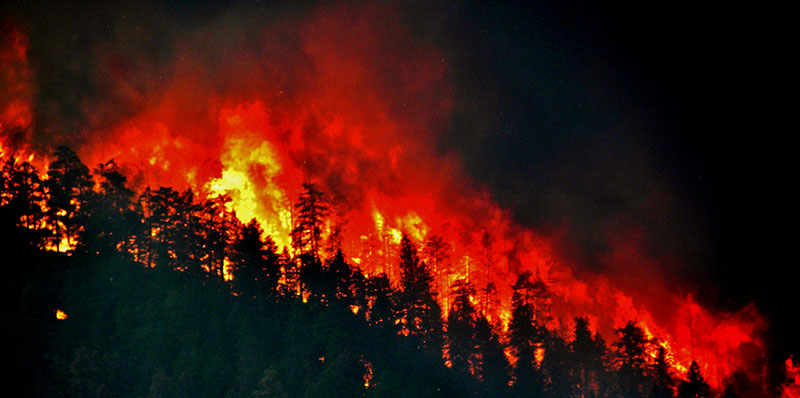
When wildfire strikes, it can occur with little warning and spread very quickly. Firefighters always do their best to protect rural residents, but ultimately it is homeowners’ responsibility to protect their property, family and animals from wildfire. Knowing what to do before, during and after an emergency may make all the difference when seconds count.
Two factors have emerged as the primary determinants of a home’s ability to survive a wildfire – quality of the defensible space around the home and the home’s structural ignitability.
Defensible space is the natural and landscaped area around a home or other structure that has been modified to reduce fire hazard. Defensible space gives a home a fighting chance against an approaching wildfire and gives firefighters a safer area to work in during a fire. Creating a defensible space also reduces the chance of a structure fire spreading to the surrounding forest and other homes. More at http://csfs.colostate.edu/2016/06/30/wildfire-activity-highlights-need-mitigation-protect-homes/
The Colorado State Forest Service offers numerous resources to help private landowners create defensible space and take other actions to protect homes and communities at http://csfs.colostate.edu/wildfire-mitigation/
When disaster strikes, it’s also important to consider the safety of pets and livestock. To learn more watch the video at https://youtu.be/sOZ-AJPo2YA/.
Stay informed
Homeowners can prepare ahead of any disaster by having a plan in place and making some basic preparations:
- establish the best evacuation routes
- determine how and where family members will communicate and connect with one another
- assemble a disaster supply kit
- make a list of critical items such as medications, passports, etc., to bring during an evacuation
- sign up ahead of time for local emergency alerts.
For information on creating a durable, water-resistant “grab-and-go” container to hold critical items, go to http://extension.colostate.edu/docs/pubs/consumer/09156.pdf.
Residents can get more information on the Extension office websites, the Colorado State Forest Service websites and local CSFS district offices, and from local county emergency preparedness agencies.
Additional resources
From Colorado State Forest Service
FireWise home construction: http://static.colostate.edu/client-files/csfs/pdfs/firewise-construction2012.pdf
The Home Ignition Zone: http://csfs.colostate.edu/wildfire-mitigation/protect-your-home-property-forest-from-wildfire/
Defensible Space Quick Guide: http://static.colostate.edu/client-files/csfs/pdfs/FIRE2012_1_DspaceQuickGuide.pdf
Colorado Wildfire Risk Assessment Portal (CO-WRAP): https://www.coloradowildfirerisk.com/
From Extension
Overall fire-related information: http://extension.colostate.edu/disaster-web-sites/fire-resources/fire-resources-csu-and-other-national-extension-fire-related-information/
Wildfire livestock resources: http://extension.colostate.edu/disaster-web-sites/fire-resources/fire-livestock-resources/
Returning to your home kitchen after a wildfire evacuation: http://extension.colostate.edu/docs/pubs/fire/kitchen-after-fire.pdf
Protecting and restoring ponds following a wildfire: http://extension.colostate.edu/docs/pubs/fire/ponds.pdf
Use of wells and septic systems following a wildfire: http://extension.colostate.edu/docs/pubs/fire/septicsystems.pdf
Land recovery after wildfire: http://www.range.colostate.edu/firerecovery.shtml